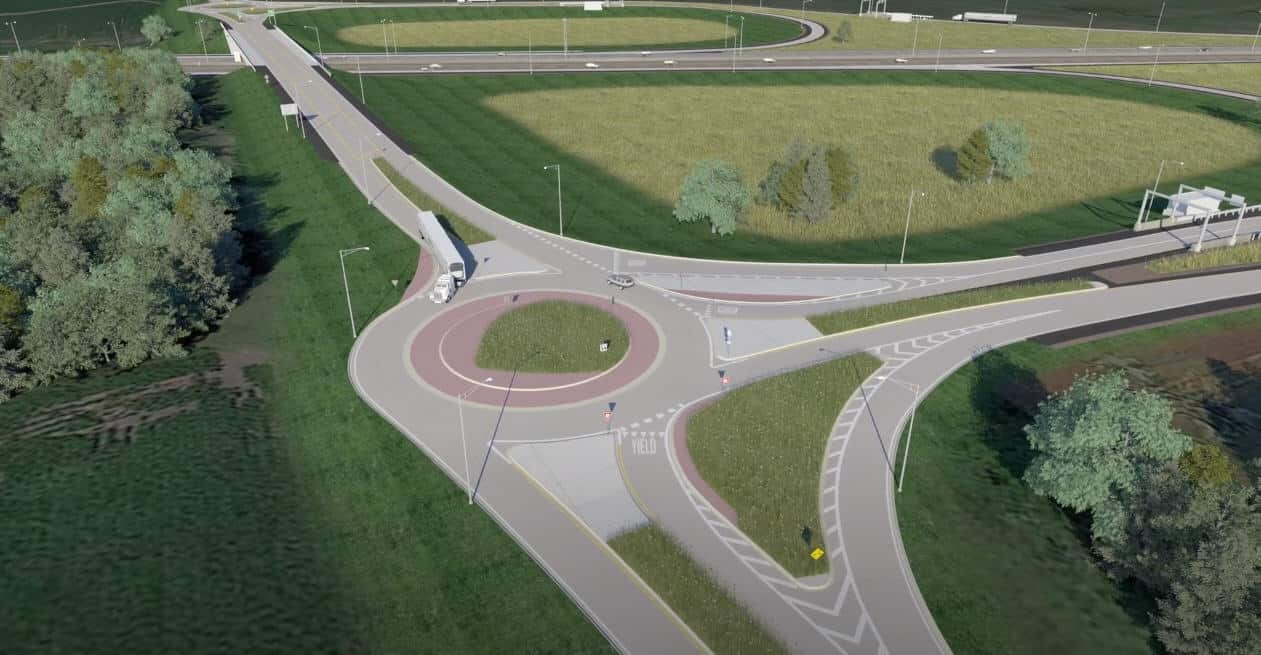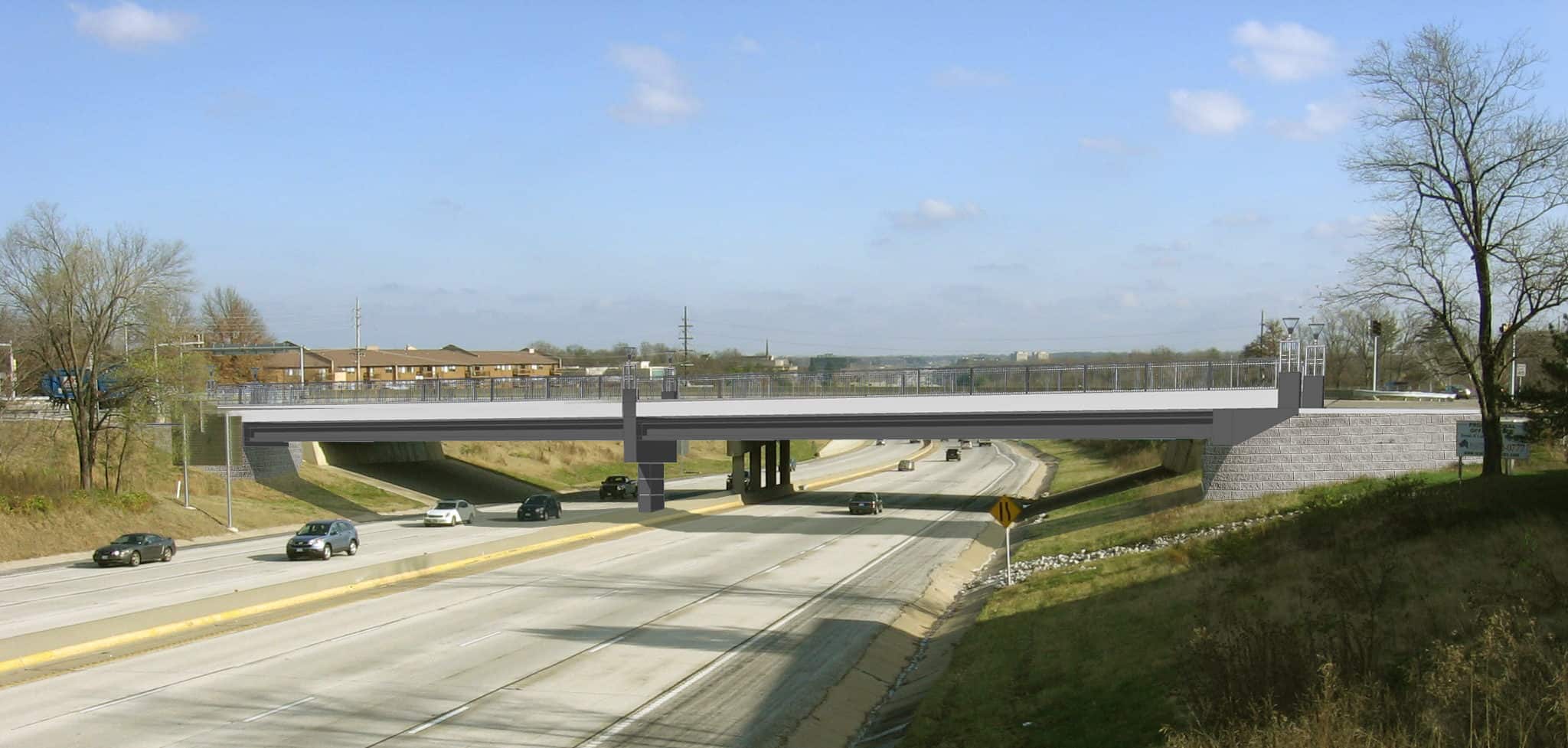
3D Visualization Techniques Can Help Communities Understand New Projects in Virtual Environments

Open houses and public meetings, whether in person or virtual, are a recognized way to share infrastructure changes with a community and in many cases are required aspects of a project. Most recently, strip maps, or plan views of the project, have been the standard way to communicate the planned improvements to the public and key stakeholders. However, current design tools can provide a three-dimensional (3D) view of the project that can be navigated and focused on specific areas of concern for the people in attendance. Think of it as an improved Google Street View(TM) or something similar, with the ability to view the proposed project, not just the existing environment.
Here are four common questions about incorporating 3D visualization techniques into infrastructure improvement projects.
Why move to a 3D view for meetings?
The first reason is to provide a better understanding of the project. Many people have difficulty understanding the traditional plan view. However, a 3D visualization helps people see the improvements and facilitates better communication. When people see the improvements in this fashion, it can create an open and constructive dialogue about the project that addresses public concerns. With an open dialogue, people feel heard, and that results in better understanding and, ultimately, a more successful project.
Another reason is the shift to virtual engagements in response to the COVID-19 pandemic. Virtual engagements – meetings and the like – increased and became the norm to keep infrastructure projects progressing. These virtual meetings respected the need for social distancing and introduced new tools and methods to engage the public. Virtual meetings have been well-received, have encouraged more public participation, and are likely to continue in some fashion. 3D views can be more valuable within a virtual meeting than a standard strip map when a one-on-one, in-person conversation is missing. Many virtual meetings rely on chat messages, electronic commenting, email, or other methods to post questions without face-to-face interaction between the design team and project stakeholders. 3D views enhance the message that is shared and improves communication virtually. If a virtual meeting is conducted via live stream or webinar-based technology, the facilitator can also focus the 3D model to an area of concern and better explain the project to the attendees who can view the model in real-time on their computer screen. Also, the 3D model can be used during any follow-up conversations or virtual meetings to provide more detail.

Which type of project stands to benefit the most from 3D visualization Techniques?
Projects that will bring significant changes to existing conditions will benefit the most from visualization techniques provided by 3D views. Project size is less of a factor than the amount of change. Examples of such projects include converting a typical roadway intersection into a roundabout, widening a two-lane road to a four-lane road with a median, and adding a multi-use trail along an existing road.
Additional consideration should be given to projects expected to attract public opposition. Contentious projects always benefit from a robust public engagement plan. Allowing the public to voice their concerns and involving them in the solution often brings projects to a satisfactory consensus. Graphics that give people a better understanding at an early stage will result in an improved understanding of the project’s overall need and may lead to quicker consensus overall.
How much do 3D Graphics cost?
While not non-existent, the additional cost to add 3D graphics is surprisingly small. Facilitating an open house or public meeting for a traditional project can cost $10,000 to over $20,000, depending on the size and number of printed displays that are required. The effort needed to create the 3D view is similar to the effort needed to produce traditional plan view displays. However, you need to start with different base information to provide existing 3D ground data. The design is placed within this data to give it context. To share the 3D models, the meeting space will need to include a large monitor, projector, or TV along with a high-level laptop to display and manipulate the model.
Overall, 3D visualization for a public meeting can cost $5,000 to $10,000 above traditional costs, depending on the complexity of the project, the detail provided, and extra photography or data acquisition needed to create the 3D model. Considering most projects that include public meetings have budgets around $1,000,000, this cost is minimal given the benefit it provides. Additionally, we anticipate this cost will decrease as design tools continue to improve. While difficult to measure, the cost associated with right-of-way negotiations and design changes is expected to be less costly because of improved communication facilitated by using 3D visualization.
How do you get started?
Getting started is simple. All you need is the right kind of photography taken for your project site. You can acquire this photography in many ways: ground photography, drone footage, or other existing topographic photo information that may be available from public agencies. Learn more about the tools by talking to your engineering services provider or contact our local HR Green office. The earlier you start the conversation, the more economical and better integrated the 3D model will be with the overall project.
Subscribe to HR Green Insights
We're dedicated to providing up-to-date knowledge and insights about the topics that matter most to you. We know how busy you are, so we will keep this simple, covering just one topic per email. Once you've subscribed, you can easily customize your preferences to receive only the updates relevant to you.

